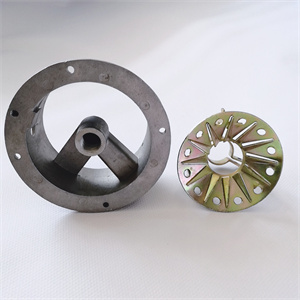The tempering temperature of Precision Stamping Parts depends on the material used, its thickness, quenching method, and the final required mechanical properties. Different materials (such as carbon steel, alloy steel, stainless steel, etc.) have different tempering temperature ranges.
Generally speaking, the tempering temperature can be roughly divided into the following ranges:
Low temperature tempering: usually between 150 ° C and 250 ° C. Low temperature tempering is mainly used to maintain the high hardness and wear resistance of the workpiece, while reducing the internal stress and brittleness after quenching. This tempering method is suitable for stamped parts that require high hardness and certain toughness.
Medium Temperature Tempering: typically between 300 ° C and 500 ° C. Medium temperature tempering can achieve good toughness and plasticity of the workpiece while maintaining a certain level of hardness. This tempering method is suitable for stamped parts that require comprehensive mechanical properties.
High temperature tempering: usually between 500 ° C and 700 ° C. High temperature tempering is mainly used to eliminate internal stress of workpieces, improve toughness and plasticity, but it will reduce hardness. This tempering method is suitable for stamping parts that require high toughness and good plasticity, such as certain components in automotive parts.
The above temperature range is for general guidance only, and the specific tempering temperature should be determined based on the chemical composition of the material, quenching conditions, and required mechanical properties. In addition, tempering time is also an important factor affecting the tempering effect and should be adjusted according to specific circumstances.
Heat treatment can change the internal structure of stamping parts, thus optimizing their mechanical properties. For example, quenching can significantly improve the hardness and strength of parts. Commonly used in the manufacture of precision stamped parts that are subject to high loads and wear, such as some key components in automobile engines.
Annealing can reduce the hardness of the material, improve its plasticity and toughness, facilitate subsequent punching and prevent brittle fracture of the parts in use. It is widely used in precision stamping parts with high ductility requirements, such as precision connectors in electronic equipment.
The normalizing treatment can refine the grain and improve the comprehensive mechanical property of the material, so that the precision stamping parts have good toughness and fatigue strength while maintaining a certain strength. Normalized stamped parts provide more stable and reliable performance in precision instrument manufacturing.
